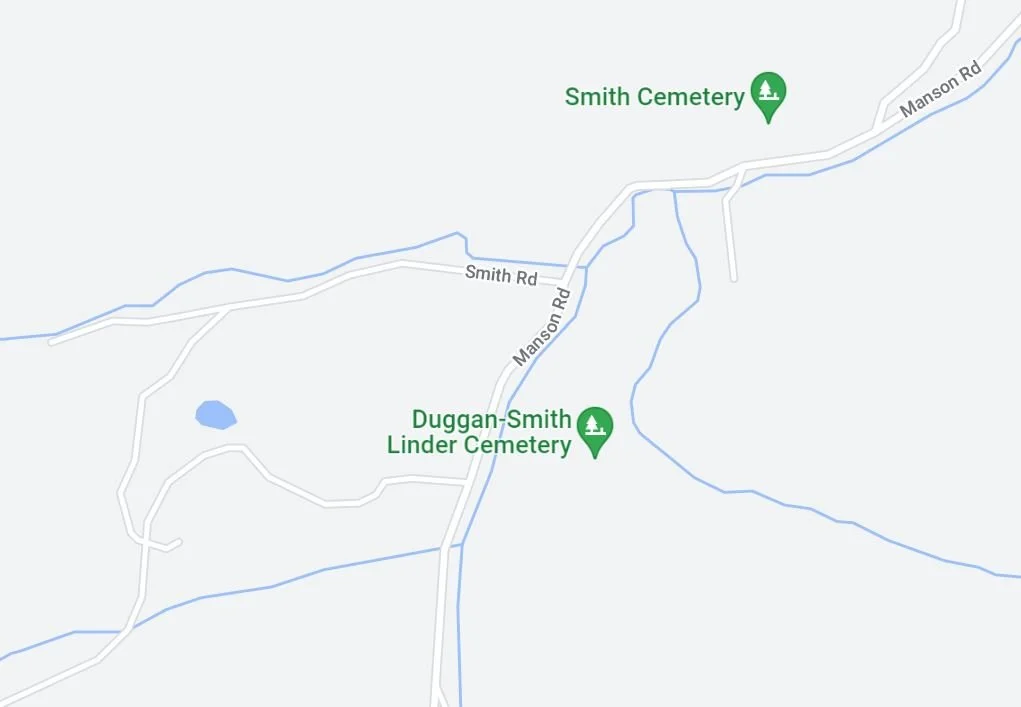The Mystery of Manson, Tennessee
/I’ve talked here a number of times about Tennessee’s ghost towns. These boom towns that popped up around a mine or timber tract often had their own post office, railroad spur and even hotels. Sometimes their names are humorous, like Grief, Deposit or Pokeberry. More often than not, they are named for a prominant family in the neighborhood, like Cravens, Allred or Wilder.
Then there are the mysteries. I’m writing about this one in hopes one of you knowledgeable readers can enlighten me – along with the rest of the readers. So, I will pause right here to invite you to click “comments” below and share your information.
Please recall that my family was greatly blessed by a Grandmother (my Great-Great) who journaled the work, family, visits and news of the neighborhood. Her sixth oldest daughter was 48 before she married. While she stayed home to care for her invalid-mother, she nonetheless had quite the social life. And she frequently went to Manson.
I can’t help but wonder why. I took a little trip to Manson recently in hopes of finding the draw to that community. I barely found the community.
Manson never had a post office. However, just up the mountain in Cravenstown there may have been a post office from 1907 – 1917 (at least Cravens in Overton County had service at that time). If you headed down the mountain, Boatland had a post office for a hundred years until 1955.
Most people who visit Manson today seem to travel from the Boatland direction – in fact I got some double-takes when I mentioned I wanted to take a drive from Wilder through the Manson community. Today, the northbound, descending route is certainly the road less traveled. Yet, I find it hard to imagine in the 1940’s that many people would have driven the 25 miles to Jamestown, down the mountain to Boatland and then turned back up toward Manson…but maybe.
There are several cemeteries in Manson – family cemeteries – which testify to a thriving community over a period of years. Before you email me jokes that cemeteries aren’t indicators of successful communities, I want to remind you that we bury our loved ones close to us (especially in years gone by) and having people left to bury the dead is a simple sign of success.
And, there’s a church in Manson. Well, I was told there was a church. I never saw it but one of my passengers thought she saw a building that might have been a house of worship. And that was the destination my grandmother recorded.
This mountainside between Tennessee’s highway 85 and TN-52 is a rugged 15 miles as the crow flies. While there’s ample evidence of old farms, most of the cleared fields are overgrown today. Certainly, that mountain would have held prime timber and century ago the breed of loggers in Fentress and Overton Counties would have been willing to snake the trees off of it.
On the other side of the mountain, Wilder and Davidson are best known for coal. However, a lot of timber was harvested in the same areas. While the railroad tracks provided easy transport after 1890, Manson may have yielded lumber that floated to market on the East Fork of the Obey River. Either way, a large timber operation builds quite a settlement. Yet those boom towns often had their own post offices.
There are no discernible signs of a town there now and nobody much talks about Manson anymore. Yet, my great-grandaunt saw fit to visit there; she surely had a reason.
So here you have it – more questions than answers. Yet a fascinating mystery. This is what I get as I try to peel back the layers of the personalities that inspire Tennessee Mountain Stories.
I’m looking forward to your comments!












